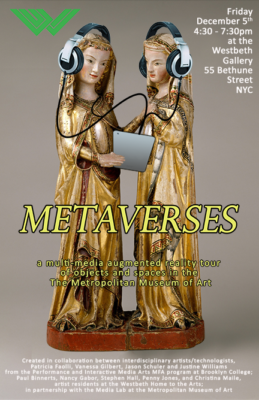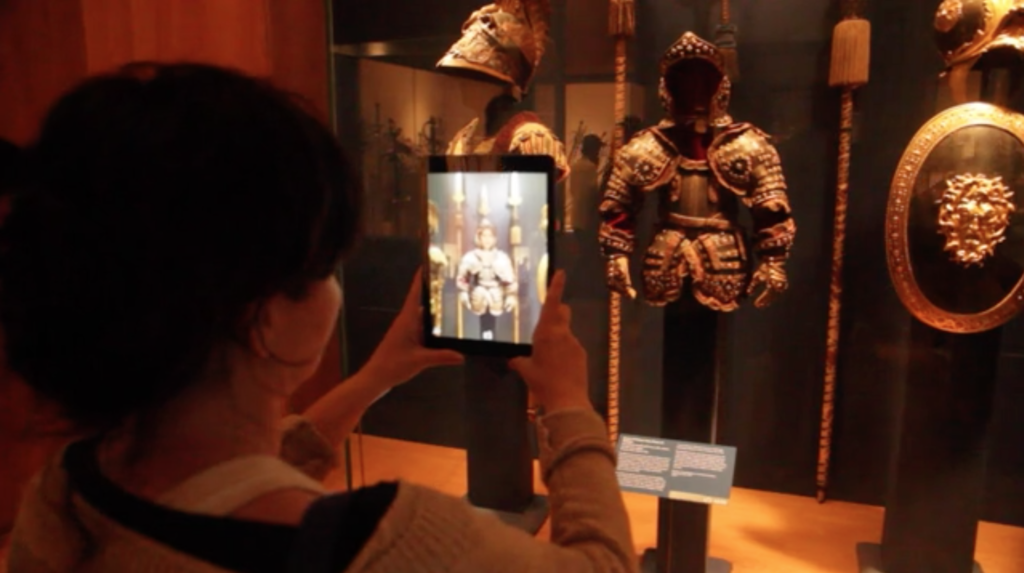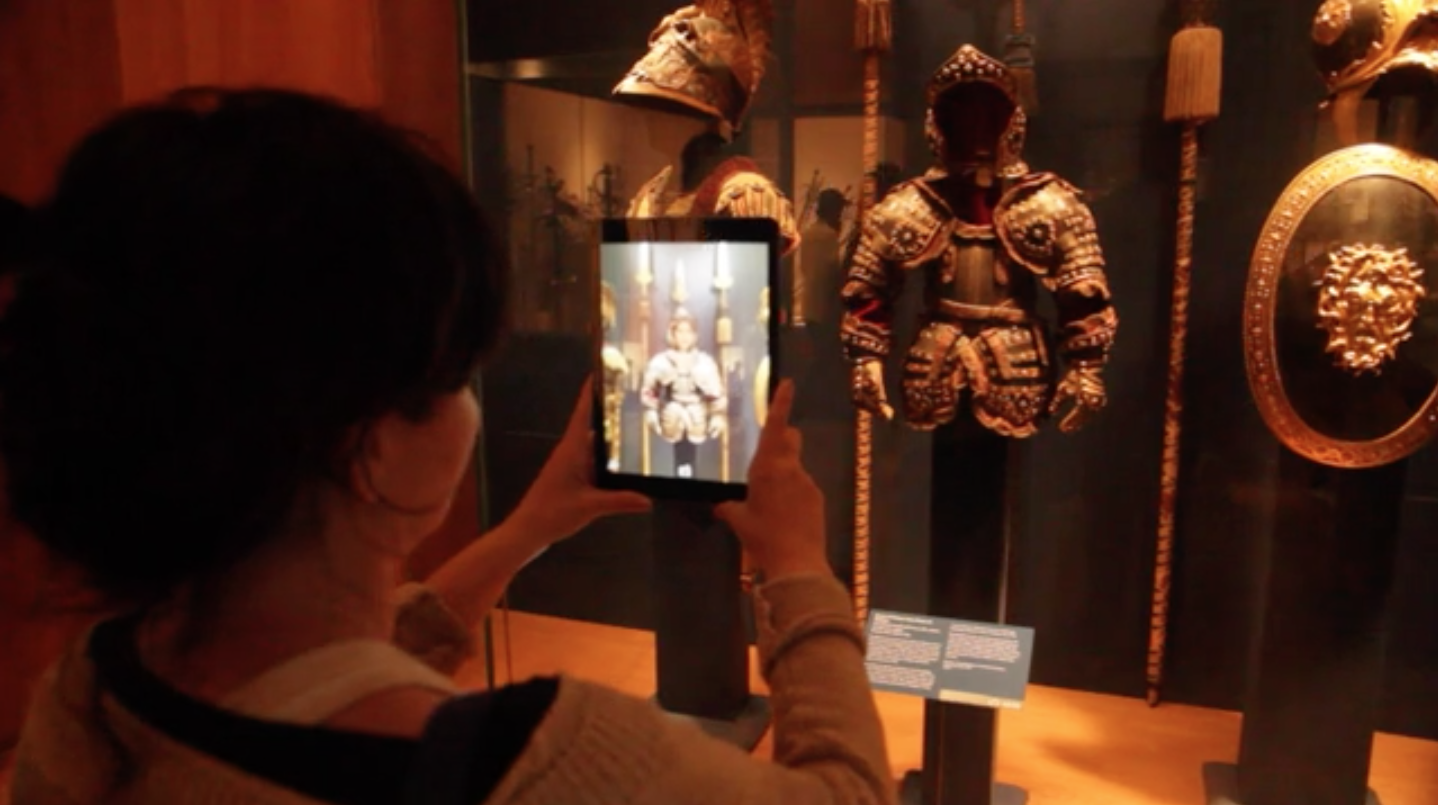
Artists Justine Williams, Jason Schuler, Vanessa Gilbert and Patricia Faolli collaborated in residence at the Metropolitan Museum of Art’s Media Lab, exploring creative ways to use augmented-reality to tour the Museum’s collections.
Inspired by community-based social arts, the emerging artists collaborated with established older artists Paul Binnerts, Nancy Gabor, Stephen Hall, Penny Jones and Christina Maile, who have sustained artistic practices, living and working at the historic Westbeth Home to the Arts. The group calls the collaboration “Metaverses” – referring to the term for a shared virtual space.
The intergenerational collaboration between the artists resulted in the creation of original material to augment museum visitors’ experience of the Met’s collections with elements of time-based, visual and sound art, and digital media.
Augmented-Reality (AR) technology mediates sensory input, altering a participant’s perception of their physical environment. Technology also functions as the artists’ central collaborative tool, enhancing the exchange within the group as they create work in response to selected pieces in the Met’s galleries.
Augmented-Reality Tour at the Metropolitan Museum of Art:
An Interactive Collaboration across Generations
Older Adults Technology Services (OATS), an organization that empowers older adults through technology, worked with the artists to share the group’s work with members of the population they serve through their programming. OATS seniors engaged in a hands-on art and technology workshop at their facility led by several of the artists and participated in the augmented-reality tour, experiencing the technology in tandem with younger audience members.
Collaborating Artists:
Justine Williams, interdisciplinary artist and performer interested in art as social practice and a faculty member at the Yale School of Drama.
Jason Schuler, director, designer, visual artist and performer; founder of the award-winning Operating Theater Company.
Vanessa Gilbert, interdisciplinary artist and former Artistic Director of Perishable Theatre in Providence, Rhode Island.
Patrícia Faolli, multidisciplinary Brazilian artist and part of the international performance art group Ajuntamento Meninas João.
 Paul Binnerts is an international theater director and writer whose work has been produced in The Netherlands, UK, Germany, France, Japan, Israel and US.
Paul Binnerts is an international theater director and writer whose work has been produced in The Netherlands, UK, Germany, France, Japan, Israel and US.
Nancy Gabor is a theater director who has worked internationally with Joseph Chaiken and Sam Shepard.
Stephen Hall is a painter whose recent work, featured in the New York Times, focuses on humans’ impact on the planet.
Penny Jones is a puppeteer who specializes in puppet performances for children and puppet ballets with live music for adults and children alike.
Christina Maile, recent recipient of the Pollock-Krasner Foundation Grant and Joan Mitchell Foundation Studio grant, works as a visual artist reflecting her multicultural West Indian and Dayak background.
Supporting Institutions:
The Met’s Media Lab “…explores ways that new technology can affect the museum experience, in its galleries, classrooms, and online. As digitally mediated experiences play an ever-greater role in our lives, it’s important that museums—the great repositories of the world’s cultural expression—stay abreast of these developments,” states Don Undeen, then Senior Manager of Media Lab, Digital Media. “In parallel with the development of new tools for creative production is the rise of a culture of ‘hacking’ and ‘making’ a do-it-yourself ethos that believes it’s more fun to create than consume. Central to this culture is a spirit of sharing, with everyone building on the work that’s come before, passing knowledge to new generations.”
The PIMA program at Brooklyn College is a cutting-edge graduate program in collaborative, experimental, multidisciplinary performing arts production. It brings together experienced professional artists from a wide range of backgrounds to collaboratively create performance that draws upon and hybridizes theater, performance art, dance, music, puppetry and new forms. Artists in the program share an interest in digital media and technology.
Westbeth Artists’ Housing is the first and largest federally subsidized artists’ colony in the United States, opened in 1970 through funding by the National Endowment for the Arts and J.M. Kaplan Foundation. Artists of Westbeth range from emerging to well-established, representing a variety of disciplines and have all chosen the arts as their life’s work.
Older Adults Technology Services (OATS) is a nonprofit organization that provides training and support, online services, and community-building programs to empower older adults to thrive as individuals and members of society.
